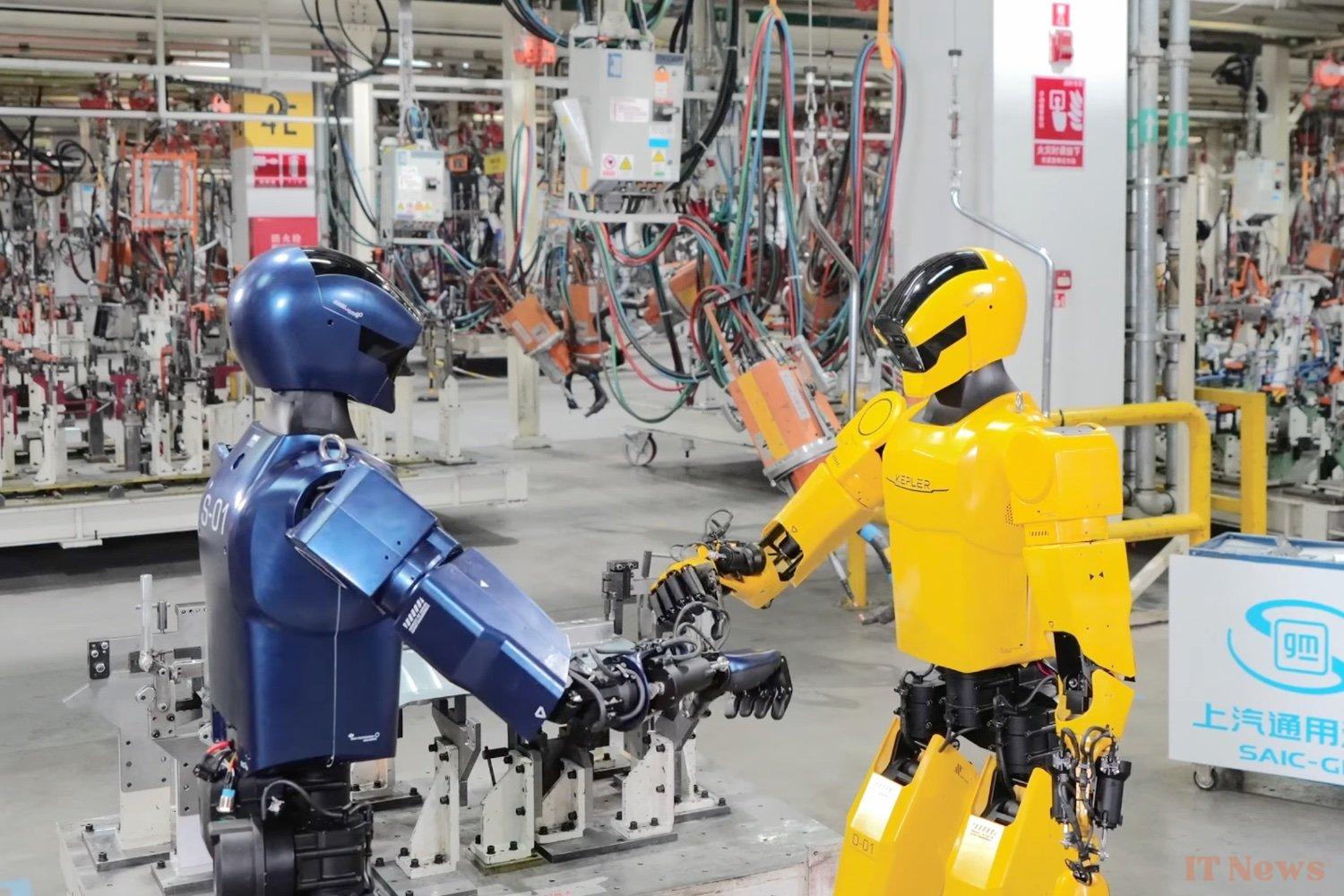Kepler didn't wait for robots to make coffee before sending them to the assembly lines. In a recently published video, we see its humanoid robot K2, nicknamed "Bumblebee," hard at work in the SAIC-GM factory in Shanghai. It's not just there for show: the robot carries heavy parts, handles tools, checks the quality of components, and walks (slowly) between machines without tripping.
A sturdy, agile, and not stupid robot
This arrival marks an important step for Kepler, which is launching its real-life tests. The K2 is not a clumsy prototype: it's the fifth generation of the Forerunner range. It incorporates quite a few developments compared to the previous model, with better coordination, a more refined perception of its environment, and above all, an ability to learn on its own. Thanks to an imitation and reinforcement learning system, it is able to progress without needing an operator on its back at all times.
On the physical side, the robot has also gained muscle: reinforced arms and legs, new sensors at its fingertips, and a battery that allows it to work for up to eight hours straight. Each hand has 11 degrees of freedom—enough to manipulate complex objects—and it can lift up to 15 kg without flinching.
While Kepler is starting with industry, this is only the beginning. The company presents its robot as a multi-purpose tool. In schools, it could help students learn by interacting with them, or even conduct scientific experiments. In research, it would be used to collect data or manipulate precision equipment.
And that's not all. The robot would also be capable of patrolling complex environments to ensure security, thanks to its HD cameras, infrared sensors, and lidar system. In the event of an incident, it can even provide initial assistance.
Kepler also imagines its robots in warehouses, managing inventory, avoiding obstacles, or even in more dangerous areas: extreme temperatures, radiation, explosive environments... Apparently, it's not afraid to get its circuits dirty.
With this deployment in Shanghai, Kepler joins the race for "useful" robots, alongside other players like Figure, already present at BMW. The real question now: will these humanoids pass the test of daily industrial life without bugs or missteps? Kepler seems to believe it will. Will factories around the world follow?



0 Comments